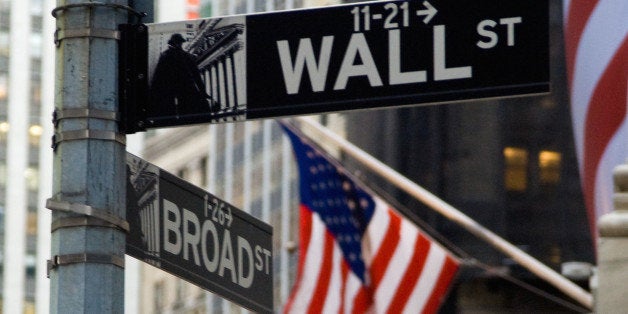
Today is the last day before Federal Reserve officials go under a blackout period where they no longer speak publicly on their individual views before next week's two-day policy meeting.
At various points, the markets have been buffeted by ongoing comments from various Fed officials: voting members, non-voting members, and even retired members. As distinguished and influential economists, these comments are closely monitored by the investment community.
These often conflicting opinions, clearly market-making news items, often on the very same day, have broad implications for the financial markets, market volatility, and Fed credibility. There has to be a better way to communicate.
The Fed has proclaimed itself to be "data dependent" in deciding on its future actions. Some of the most recent economic data include a moderate jobs report which came in below expectations, a manufacturing report which showed a slight contraction in manufacturing activity, and a services report which showed the slowest growth in six years. For its part, the data appears quite tepid.
U.S. economic growth for 2016 is expected to be about two percent, and started off the year at a clip of just about one percent. The headline unemployment figure of 4.9 percent misrepresents the broader employment situation, with a more accurate level of unemployment being the U6, which currently stands at 9.7 percent.
While traditional metrics of inflation are low, with the Consumer Price Index at about 1% annually, asset price inflation amid accommodative central bank policies has increased notably.
Is the Fed Still "Data Dependent" Amid Recent Weak Data?
On Friday, U.S. stock markets declined about 2.5 percent based largely on hawkish comments on interest rates by Eric Rosengren, President of the Boston Fed, that "gradual tightening is likely to be appropriate" and that the "(current) degree of accommodation...increases the chances of overheating the economy." Essentially, Rosengren thinks the economy is growing too fast and he is likely to vote for a rate increase to slow it down.
The Fed's stated mantra of remaining "data dependent" didn't seem to be much of a factor in these comments. The market's reaction on Friday in part was due to questions about whether or not Fed members are aligned on being "data dependent."
This has the market guessing as to a potential shift in the Fed's broader mindset
and came on the heels of notably hawkish comments from the Fed's Vice Chair, Stan Fischer in late August while in Jackson Hole, WY where he called for possibly two rates hikes this calendar year.
On Friday, the market took all this as a reason to sell off.
Today, we had comments from three Fed officials: Dennis Lockhart, President of the Atlanta Fed, Neel Kashkari, President of the Minneapolis Fed, and Fed Governor Lael Brainard. The latest commentary from Governor Brainard today indicated the need for "prudence" and caution, and that this is not the time to increase rates. She also cites the slowdown in Chinese growth and other risk factors. For his part, Neel Kashkari's comments today noted that he sees no need to rush in raising rates.
With these latest comments, the markets responded in kind, by rising 1.5 percent. This more than four percent swing in two trading days is quite astonishing. The Fed is clearly divided, but the lack of coordination and consistency in messaging seems to be no way to run the central bank of the world's largest economy.
All of these ongoing and conflicting public comments tend to raise the volatility of all assets and asset classes, including stocks, bonds, currencies, and commodities. One one hand, U.S. economic growth is rather tepid and there is little inflation evident. On the other, headline unemployment is low and could be viewed as "full" employment. Fed chair Janet Yellen would seem to have support for either decision.
The commentary from several bank executives today indicates a desire to raise rates sooner rather than later - and doing so would also increase bank profits notably.
It's A "Toss Up"
As it currently stands, the markets are anticipating that the next rate increase will most likely occur by December, after the Presidential election. But the probability of a rate increase next week may now be about 40-45 percent. As with the presidential election, it's really turning out to be a "toss up" at next week's Fed meeting.
Far Out on The Risk Curve
The low interest rate environment has been been hard on savers and retirees, as they have watched their interest income reduced to pennies and their principal buying power eroded by inflation, particularly in the areas of rising housing, healthcare, and food.
With low interest rates for years, investors have been encouraged to put their cash to work in more risky assets. The effort by policy makers has been to push savers into investing in the markets where they can positively impact economic growth, rather than keeping cash idle in the bank.
The resulting rise in asset prices, those of stocks, bonds, and real estate, has left savers with bank deposits with far less purchasing power of both real and financial assets. Their dollar simply buys far less of these traditional assets. Retirees who truly need the security of cash deposits, and have kept bank deposits, have simply had their buying power greatly eroded.
If these savers chose to invest, they are going out on the risk curve, incurring risks that they may not be fully prepared to bear.
Markets Remain On Edge
Few would argue that over the years, interest rates globally have been brought to abnormally low levels, and in some cases have gone negative. Interest rates are likely to head higher over the next few years. But the timing, and pace of such increases, will keep markets and investors clearly on edge for the foreseeable future.
While rising interest rates "should" coincide with a rising and stronger economy, we have probably not seen the last of the market downturns or "tantrums" as we saw on Friday.
These ongoing and conflicting commentaries from Fed officials look a bit foolish. The central bankers for the world's largest economy should find a way to speak with more uniformity and clarity.
